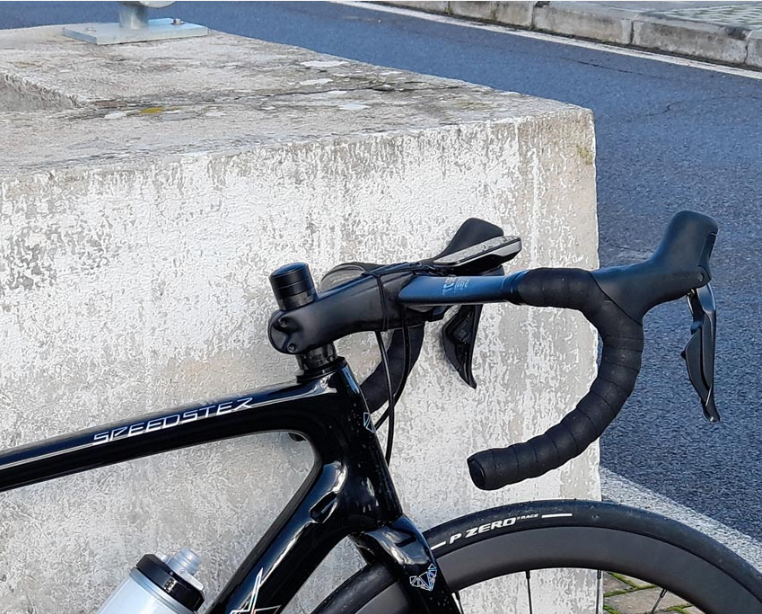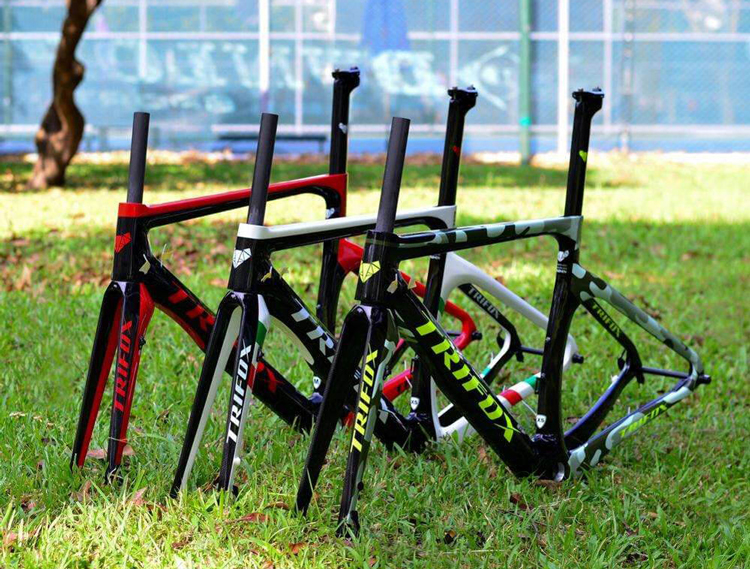The grasping position of a road handlebar, it can be simply divided into three types: the position of the hand on the brake handle, the hand on the upper end of the handle, and the grasp of the lower handle with both hands. Regarding the three grip positions, each has its own advantages and disadvantages, but more importantly, each grip position allows the rider to better face special riding conditions. Of course, the handlebar grip guide discussed below is just a reference. After all, the rider’s riding habits and body feel are also very important, and these factors must be taken into consideration.
In this article, we’ll focus on the pros and cons of each grip position, as well as when to recommend it.
1. The position of the hand on the brake handle
The grip position of the brake lever is the most common and common way of holding the road bike, because this grip position can be used for comprehensive terrain such as uphill, downhill, and flat roads.This steering position can also strike a balance between aerodynamics and comfort, and more importantly, it has the advantage of being able to control the brakes at any time. It is recommended that you should adopt this grip position during training, whether it is solo or group training. The main factor is that it can provide a quite comfortable riding position without affecting safety.
And in racing (including pro), it’s also the most common grip position, maintaining good comfort even on long rides up to several hours. In the face of the sudden need to change to a standing position in order to respond to acceleration or changes in terrain, it is not necessary to change the grip position of the hands when changing the riding position. In addition, if there is no need for super-high-speed downhill, this riding position can also maintain good handling and stability and allows the rider to control the brakes at any time. However, if the rider wants to maximize the handling and braking power, we still suggest that it is more appropriate to hold both hands on the bottom bar.
2. The hand on the upper end of the handle
The grip position of the upper handlebar, as the name suggests, is to place your hands on the flat top of the handlebar. Since this riding position brings the hands closest to the body, it keeps the back more upright for optimal riding comfort. The biggest downside, however, is the reduced aerodynamics. However, let’s not talk about this riding position for a while, which may reduce the aerodynamics. Since this riding position is not very good in handling, it is not recommended to use it when riding at high speed. The main factor is that the brake lever cannot be controlled immediately.
Another reason is that because this riding position will make the grip of the hands closer, it will reduce the handling performance, especially in the face of emergency situations, such as sharp turns or obstacles, it is very unfavorable to control. For this reason, the recommendation for the use of the upper handle position is in situations where the use of the brakes is less necessary, such as when climbing a hill or on a road with few people and bicycles.
3. The grasp the lower handle with both hands
The lower bar grip position is the most controllable grip. The disadvantage is that it is obviously not as comfortable as the other two riding positions, but it allows for more handling torque in the hands, and not only improves aerodynamics but also has very good handling.
In addition, the grip position of the lower bar also makes it easy to operate the brake lever, and you can get better braking power than using the brake lever position. The recommended time to use it is in difficult stages, such as high-speed sprints, and downhill, and in these cases, you can see professional riders use the lower bar position. By using this curved grip position, the angle of the back can be made close to the level, and the aerodynamic advantage can be optimally exerted.

You can check out our company’s Bike Handlebars DHB500, which is designed for Ultra-lightweight, full T800 carbon fiber and is easy to install. Durable and Incredible strong in pressure resistance with better looks and no compromise of stiffness.
This is a standard mold for modern road racing bikes, the tortuosity is especially great for the brake system, Carbon Drop Handlebar DHB500 provides you a safer and more comfortable riding. The stem length is 90/100/110mm.




















































































